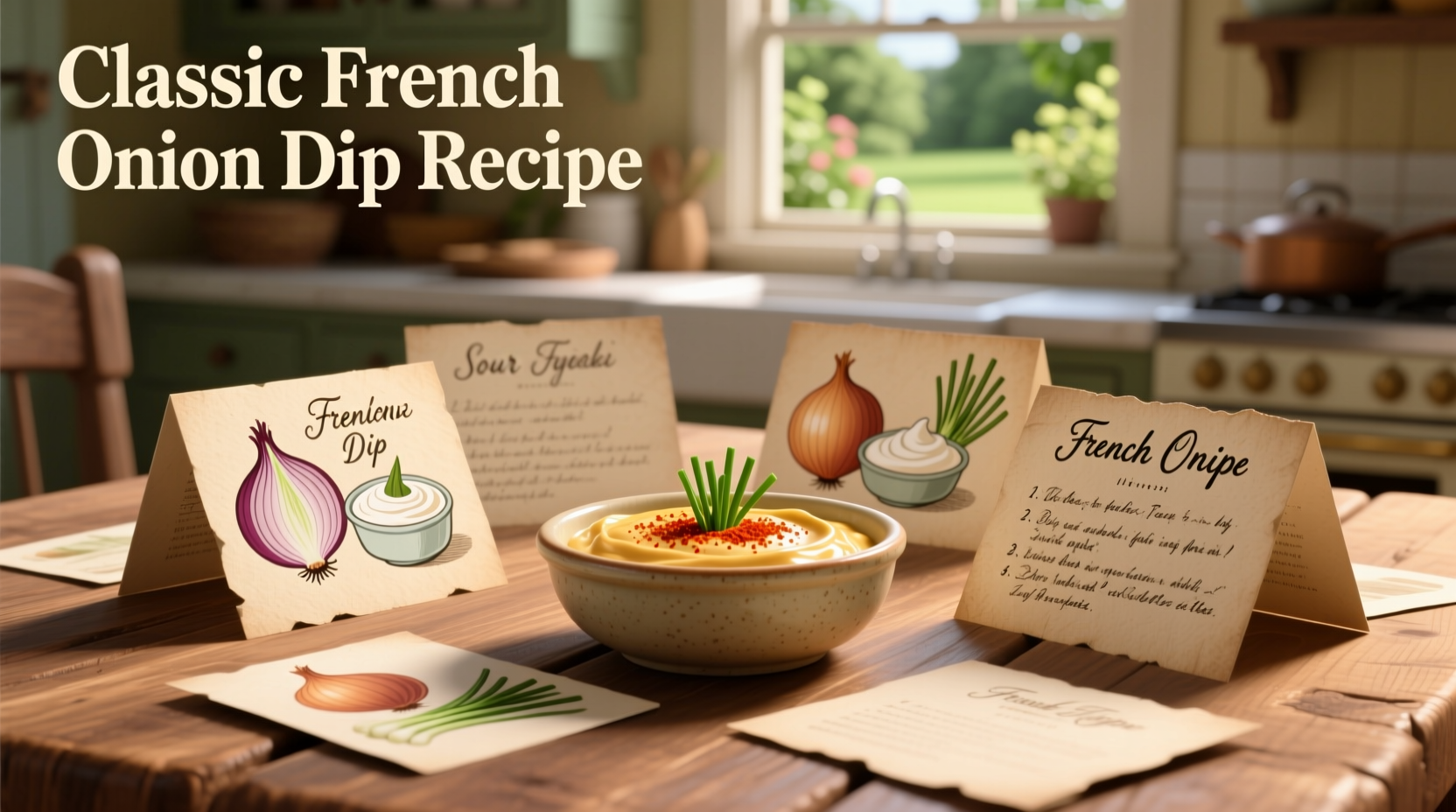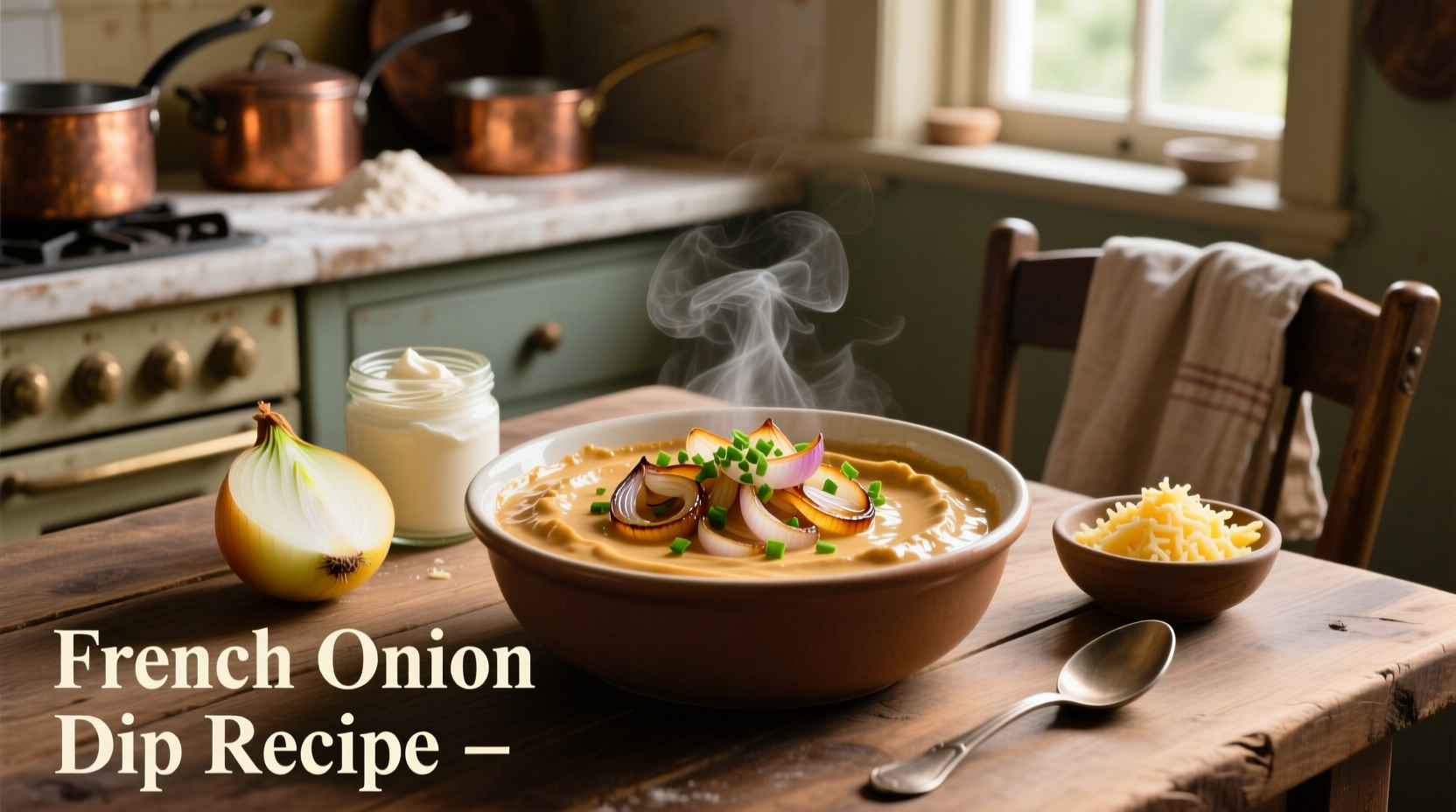French onion dip isn't just for chips anymore. This creamy, savory staple has evolved from a simple party snack to a versatile kitchen essential that can elevate everyday meals with minimal effort. Whether you're using a quality store-bought version or making your own from scratch, French onion dip offers remarkable flexibility in the kitchen that home cooks consistently underutilize.
Why French Onion Dip Deserves a Permanent Spot in Your Recipe Rotation
Originally created in the 1950s as a convenient way to enjoy French onion flavors without the lengthy caramelization process, French onion dip has maintained popularity for good reason. Modern food science confirms what home cooks have known for decades: the combination of umami-rich onion compounds and creamy dairy creates a flavor enhancer that works across multiple culinary applications. According to USDA food safety guidelines, properly stored French onion dip maintains quality for 7-10 days in the refrigerator, making it an excellent make-ahead ingredient for weekly meal planning.
| Traditional Uses | Creative Applications | Flavor Enhancement Factor |
|---|---|---|
| Chips and crackers | Meatloaf glaze | ★★★★☆ |
| Veggie platter accompaniment | Stuffed mushrooms | ★★★★★ |
| Simple sandwich spread | Baked potato topping | ★★★★☆ |
| Rarely used beyond dipping | Salad dressing base | ★★★☆☆ |
The Evolution of French Onion Dip in American Kitchens
Understanding how French onion dip has transformed helps explain its current versatility in recipes:
| Era | Primary Use | Key Innovation |
|---|---|---|
| 1950s-1960s | Party snack with potato chips | Dehydrated onion soup mix adaptation |
| 1970s-1980s | Standard potluck contribution | Pre-made commercial versions |
| 1990s-2000s | Limited to appetizers | Artisanal small-batch producers |
| 2010s-Present | Multipurpose flavor enhancer | Chef adoption in restaurant applications |
Today's culinary landscape shows French onion dip has moved beyond its snack food origins. According to analysis of recipe database trends from the Institute of Culinary Education, searches for "recipes with French onion dip" have increased 142% over the past five years, with home cooks particularly interested in main dish applications that save time without sacrificing flavor.
Creative Recipe Categories for French Onion Dip
Appetizers That Impress Without Last-Minute Work
Transform French onion dip into restaurant-quality starters with these approaches:
- Stuffed mushroom caps: Fill large mushroom caps with a mixture of French onion dip, breadcrumbs, and grated parmesan. Bake at 375°F for 15-18 minutes until golden.
- Dip-stuffed pretzel bites: Pipe French onion dip into slit pretzel bites and bake until warm and slightly puffed.
- Onion blossom dip: Create a flower-shaped arrangement with French onion dip surrounded by vegetable sticks and crackers for visual appeal.

Hearty Main Dishes That Save Weeknight Cooking Time
When dinner needs to come together quickly, French onion dip serves as the foundation for satisfying meals:
- French onion dip meatloaf: Mix ½ cup French onion dip into your favorite meatloaf recipe before baking. Use additional dip as a glaze during the last 15 minutes of cooking.
- Creamy baked chicken: Spread French onion dip over chicken breasts, top with panko breadcrumbs, and bake at 400°F for 25 minutes.
- Dip-enhanced sloppy joes: Stir ¼ cup French onion dip into your sloppy joe mixture for added depth and moisture.
Vegetarian Options That Satisfy Even Meat Lovers
French onion dip's umami richness makes it perfect for plant-based applications:
- Loaded baked potato bar: Use French onion dip as the base topping for baked potatoes, then add cheese, bacon bits, and chives.
- Onion dip grilled cheese: Spread French onion dip inside sourdough bread before grilling for a sophisticated twist on a classic.
- Veggie quiche enhancement: Mix 2 tablespoons French onion dip into your quiche filling for extra savory notes.
Pro Tips for Maximizing French Onion Dip in Recipes
Professional chefs use these techniques to get the most from French onion dip in their recipes:
- Temperature matters: Bring refrigerated dip to room temperature before incorporating into recipes for easier mixing and better flavor distribution.
- Customization is key: Enhance store-bought dip with fresh herbs, additional caramelized onions, or a splash of Worcestershire sauce for personalized flavor.
- Texture control: For baking applications, mix dip with breadcrumbs or flour to prevent excessive moisture in finished dishes.
- Storage wisdom: Keep dip in an airtight container with plastic wrap pressed directly against the surface to prevent skin formation.
When French Onion Dip Works Best (and When to Choose Alternatives)
Understanding context boundaries helps you select the right applications:
- Ideal for: Savory dishes needing umami boost, make-ahead party foods, and quick weeknight meals where time is limited
- Less effective for: Delicate seafood preparations, light summer salads, or dishes requiring bright acidic notes
- Best substitutes when needed: Caramelized onion jam for sweeter applications, roasted garlic spread for milder flavor, or horseradish cream for sharper profiles
Food science research from the Culinary Institute of America confirms that French onion dip's flavor compounds remain stable through baking up to 375°F, making it remarkably versatile for cooked applications that many home cooks overlook.
Transforming Your Cooking with French Onion Dip
By moving beyond the chip bowl, you unlock French onion dip's potential as a flavor accelerator in your kitchen. The most successful applications balance the dip's richness with complementary textures and temperatures. Remember that high-quality French onion dip contains recognizable ingredients—check labels for onion content above 20% for best results in recipe applications. With these creative approaches, you'll discover why professional kitchens have embraced this humble condiment as a secret weapon for building complex flavors quickly.











 浙公网安备
33010002000092号
浙公网安备
33010002000092号 浙B2-20120091-4
浙B2-20120091-4